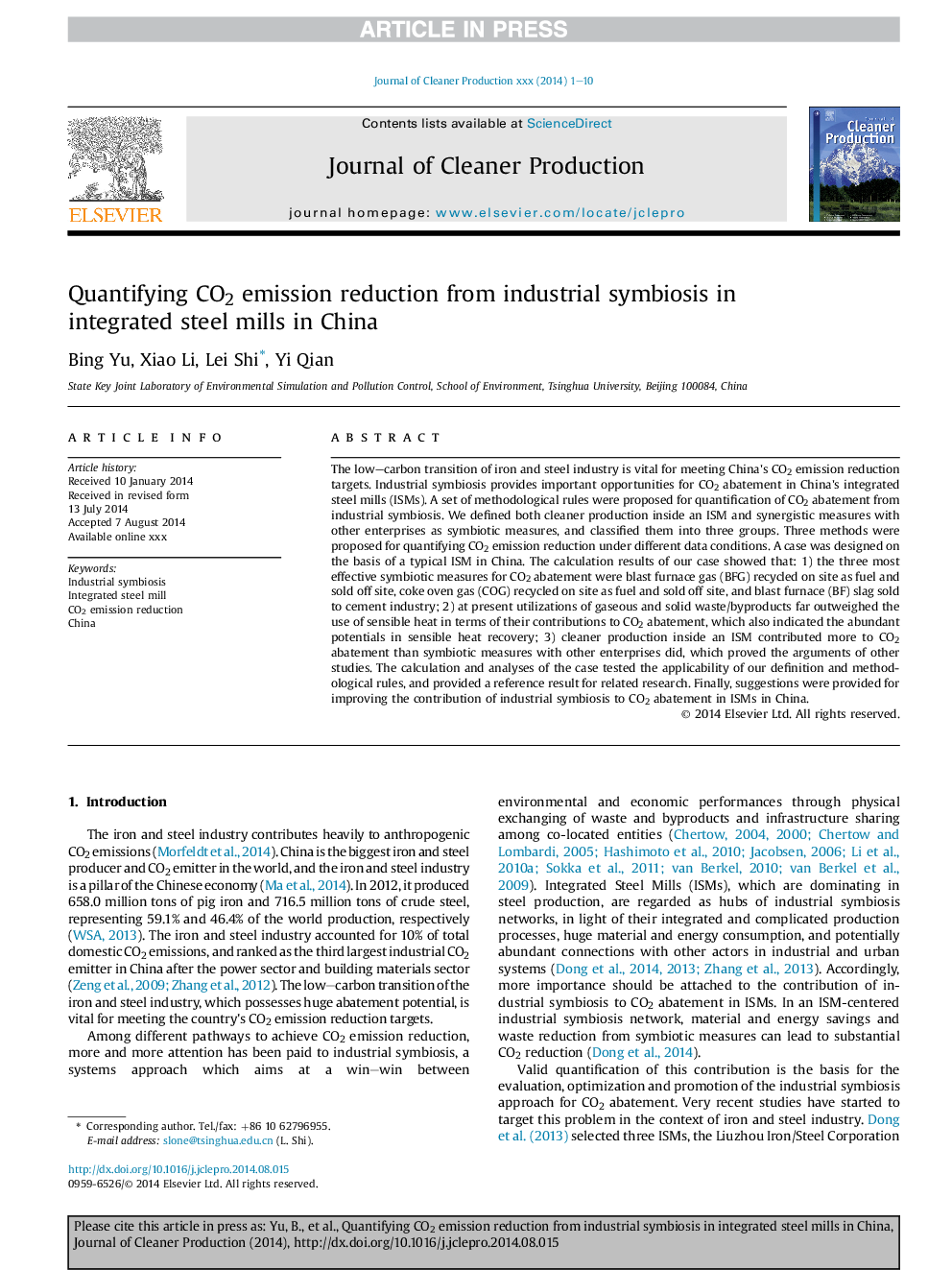| Article ID | Journal | Published Year | Pages | File Type |
|---|---|---|---|---|
| 8103678 | Journal of Cleaner Production | 2015 | 10 Pages |
Abstract
The low-carbon transition of iron and steel industry is vital for meeting China's CO2 emission reduction targets. Industrial symbiosis provides important opportunities for CO2 abatement in China's integrated steel mills (ISMs). A set of methodological rules were proposed for quantification of CO2 abatement from industrial symbiosis. We defined both cleaner production inside an ISM and synergistic measures with other enterprises as symbiotic measures, and classified them into three groups. Three methods were proposed for quantifying CO2 emission reduction under different data conditions. A case was designed on the basis of a typical ISM in China. The calculation results of our case showed that: 1) the three most effective symbiotic measures for CO2 abatement were blast furnace gas (BFG) recycled on site as fuel and sold off site, coke oven gas (COG) recycled on site as fuel and sold off site, and blast furnace (BF) slag sold to cement industry; 2) at present utilizations of gaseous and solid waste/byproducts far outweighed the use of sensible heat in terms of their contributions to CO2 abatement, which also indicated the abundant potentials in sensible heat recovery; 3) cleaner production inside an ISM contributed more to CO2 abatement than symbiotic measures with other enterprises did, which proved the arguments of other studies. The calculation and analyses of the case tested the applicability of our definition and methodological rules, and provided a reference result for related research. Finally, suggestions were provided for improving the contribution of industrial symbiosis to CO2 abatement in ISMs in China.
Related Topics
Physical Sciences and Engineering
Energy
Renewable Energy, Sustainability and the Environment
Authors
Bing Yu, Xiao Li, Lei Shi, Yi Qian,
